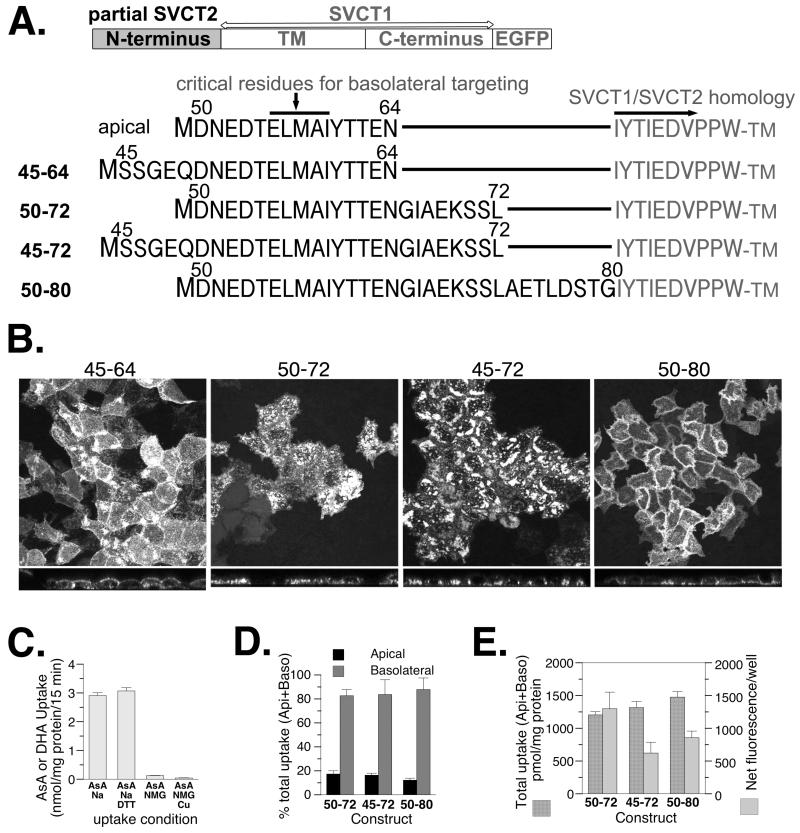FIGURE 2.
The effects of length and residue position of SVCT2 N-terminal sequence in its ability to target SVCT1 to the basolateral membrane of well-differentiated MDCK cells. (A) Schematic and sequence presentation of homologous chimeras containing SVCT2-specific N-terminal sequences linking to SVCT1 sequence without any SVCT1-specific N-terminal sequence. (B) Representative confocal merged XY and YZ images of MDCK cells stably expressing each construct. (C) MDCK cells stably expressing construct 45-64 were grown on the 6-well plate and the uptake of vitamin C, ascorbate (AsA) and its oxidized form dehydroascorbate (DHA), across the apical membrane was measured. (D) The proportion of ascorbate uptake across the apical (Api) and basolateral (Baso) membrane of MDCK cells stably expressing each construct and grown on Transwells. (E) The efficiency with which each construct was incorporated into the cell membrane. (C,D,E) Data shown are means±SD of triplicate wells. Some error bars are too small to be visible.

